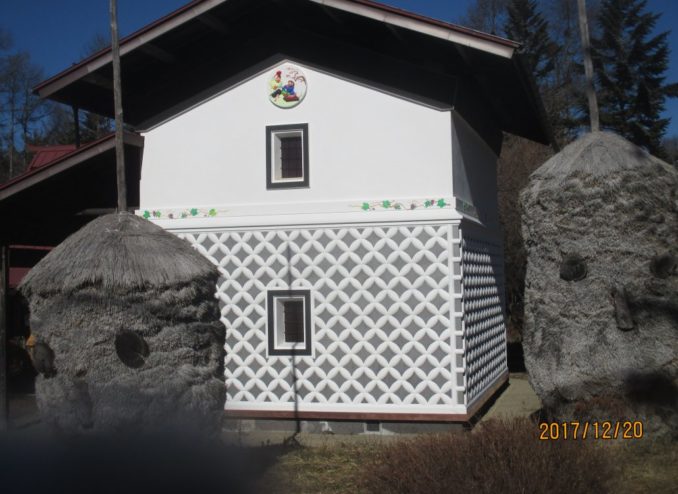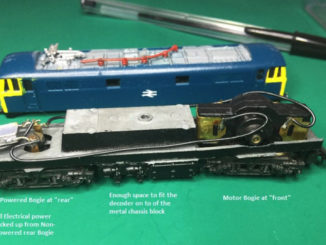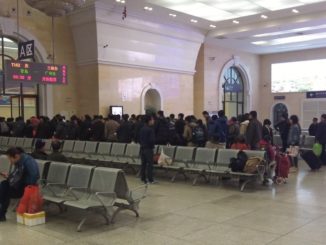
When you read about Japanese trains, the first thing that comes to mind is probably the shinkansen, the world’s first bullet train and still a wonder to behold and to ride in. Or you may think of the Tokyo “overground,” easily the most complex, comprehensive, densely-operated, efficient and reliable urban rail system in the world, with lines capable of running a train a minute in the daily rush hours (which actually make up much of the day). One a minute means that that trains often depart stations with the service in front still in sight.
But these wonders are not what this article is about. Today, I want to look at the donkou, the two-coach locals that potter along forgotten single-track branches through the lush valleys and steep mountain ranges of provincial Japan. Usually nearly empty except for the twice-daily school runs, cheerily losing millions of yen every day, these old workhorses put out to graze in the sticks are trundling reminders of the lost certainties and optimism of Japan’s postwar years, a time from which much of the rolling stock still dates.
Some of my best times in Japan were spent on the donkou lines in the 1990s, riding aimlessly around together with Yuko in the backwoods and along the forgotten coasts. We covered a lot of country. We went up to Hokkaido, where we admired the Meiji brick wharfs of Hakodate and struggled to stay upright on the icy pavements of Sapporo. We did the Geibi line in Chugoku, in the mountains of southern Honshu, nearly 100 miles of single track with nearly as many village stations, meandering at a donkey’s pace among wooded hillsides and hamlets with heavy roofs of black tiles that gleamed in the hot sun like oil. And the Gono line, around the wild, craggy shore of northwest Honshu, reminiscent of the Cumbrian coast line and said to be Japan’s most spectacular route. And around Shikoku island, where Yuko’s brother-in-law took us to Japan’s oldest hot-spring resort, in Matsuyama, and showed us a hotel used by the emperor which stood by one of Japan’s last “Soapland” bathhouse brothels.
Our longest outing was the slow, empty night train from Tokyo down to Nagasaki, a 17-hour trundle, not a donkou, but the crummiest train I ever rode in Japan, with filthy net curtains, frayed, faded carpeting, hard seats like in China, and aluminium fittings that gave you static shocks. You could smell the brake fluid at every grinding stop. For decades, the crew told us, this had been the main line for commercials heading to the deep south, but it was now being wound down pending the opening of a new bullet line (now operational). “Strictly for the anoraks now,” they said. It was already easier to fly the route anyway. The Nagasaki night train would be gone in a few months.

One winter, we went to Nagano city in central Honshu. We started at Ueda station, where, in 2002, the ticket guy was still using a soroban abacus. Then up the long Shinano valley to the prefectural capital, which we reached in heavy snow. The hotel was the usual tower block with the usual tiny rooms and view of electricity pylons and rooftop neon signs, but there was a little furo sunken bath by the window looking down eight floors to the station.
That was a magic hour. I sat there with a flagon of sake and watched the bullet trains and local services far below, headlights blazing through the curtains of snow, gliding into and out of the platforms. Each little train would have miles of mountains and hours of blackness and blizzard to toil through before the day was done, bringing home to me once more the depth, the vastness of this “little” country, which is actually over a thousand miles from north to south, the same distance as Mexico to Canada.
The line from Nagano city to Matsumoto was also lovely, rising up the rugged flank of the Shinano valley. One little station perched on a steep drop was called Ubasute, the name written with the characters for “throw away old woman.” I laughed, but Yuko said this practice did exist in ancient Japan — unwanted elders could be literally cast out when they became too much of a burden. While I stared out of the window, she was still busy writing New Year’s Cards in the trains. She had already sent out well over a hundred, twice the number of her friends and relations and including one to a man she had met briefly ten years before and could no longer remember anything about. “You just have to do it,” she said. “You can’t stop.”
The place we kept returning to was the north of Honshu, the Tohoku area and the northwest coast, the area people derisively called Nihon no ura (the backside of Japan), where the Sea of Japan pounds the shore and the winter snows fall meters deep. Every line seemed half tunnel. You would emerge from the blackness to catch the backside of a deer bounding up the embankment or you would clank over a gorge on a metal bridge, and then the train would plunge into the tunnel murk again.

We loved to get off at the one-horse seaside towns. You hardly needed to leave the ticket area, since the station and its forecourt were the hubs of these places, doing duty for the market square in a European town, the place where most of the commerce and life of the place were found. They weren’t grand buildings, these back-country stations, just timber-framed sheds with a kerosene stove in the waiting room. On the walls would hang pictures by children from the local schools and notices in quaintly formal Japanese about the modest local tourist attractions — maybe a temple, or a rare type of seagull, or associations with a folk-tale character like the Kappa Fuchi troll. There would always be a neatly uniformed, ever-helpful and mysteriously large station staff, sitting among banks of computers and comms equipment as if this were Cape Canaveral, not some obscure branch line station with eight trains a day.
The trip I remember most fondly was the line up the Shimokita peninsula. This corner of the country is an axe-shaped protruberance from the top of Honshu. While it is not one of Japans’ far-flung extremities, it sure felt like one. It was the remotest place I visited in my time in Japan, well off the tourist trail and not easy to get to in a hurry. Then again, there is little reason to go, unless you are a fisherman, sailor or nuclear plant worker.
The line was coastal, as the best ones tended to be, but, unusually, not mountainous. Instead, the scene was one of conifer-covered hills running gently down to a shore of heathland. Our knackered old one-car train was full of high-school students playing cards. It was the first train I had ever used in Japan that had no interior ads — evidently they were just not worth bothering with. It was a most characterful conveyance, clanking loudly in open country, approaching stations with great trepidation and foghorn blasts. It brought us after an age to Ohata — the “town of squid” — and the most northerly town on the Honshu rail network. We reached it in darkness. The most colourful thing was a petrol station sign. The lights of the place were out at sea, the bobbing lamps of the squid boats, which went out every night at ten.
We went back next day via Ominato, a port and naval base. The great mountain of Shimokita, Osorezan, loomed over the little town, its foothills dotted with bubble-like radar installations. The town had a whole alley of rundown little “snack” and hostess bars catering to the seamen’s landward needs, all of which were shut.

We sat and chatted with our landlord in his office, for he was also Ominato’s taxi-firm boss. Outside, three or four stout-looking matrons with shovels assisted a midget mechanical digger with some roadworks — a scene unimaginable in dainty Tokyo — while he fielded queries with a heavy 1960s-style pink phone receiver you could have used to nail a coffin lid down. He was also the manager of the Ominato baseball team that once got into the Koshien national school baseball qualifiers, he said. He proudly showed us a framed photo and a pair of baseball gloves hung on the wall — the high school baseball tournament is a big deal, a highlight of the sporting year in Japan.
We chatted about this and that, sipping green tea, nibbling seaweed and eda mame beans and leafing through the previous day’s local papers. On the radio, they were singing enka. Many seekers after the true spirit of Japan head for the dojo and the zen temples. But this was about as close as I ever came to it, listening to the mawkish folksongs of longing, sat next to a kerosene stove in a shack of an office with baseball paraphernalia on the wall, on a bleak northern coast.
© text & images Joe Slater 2023



